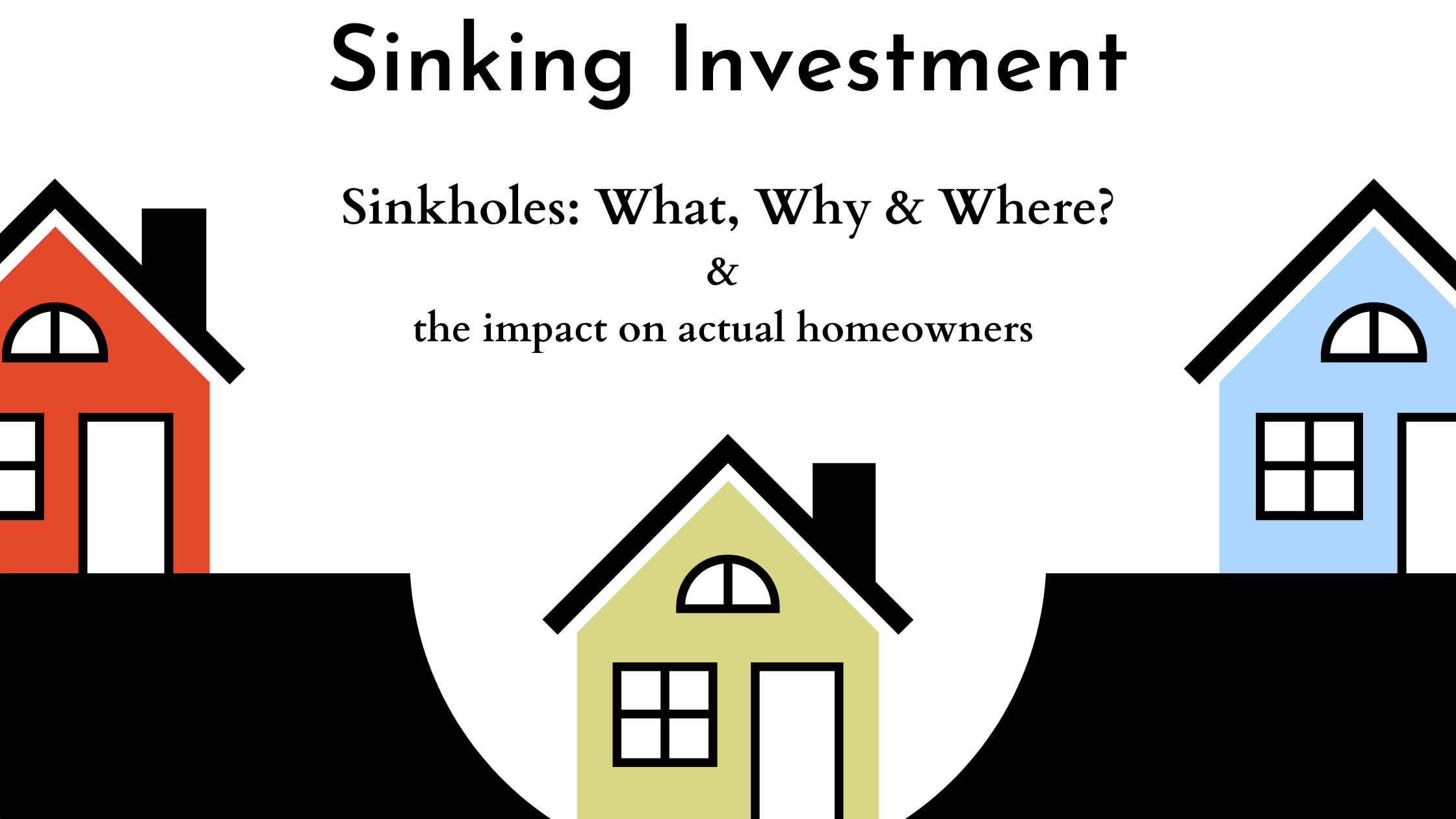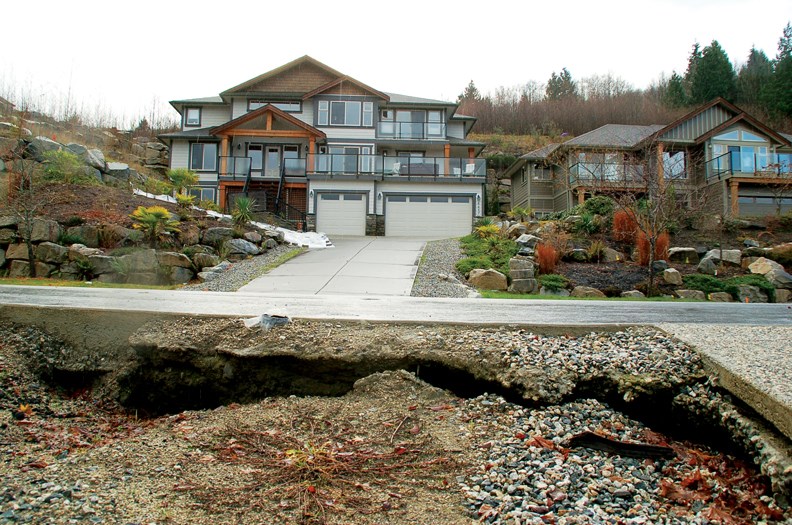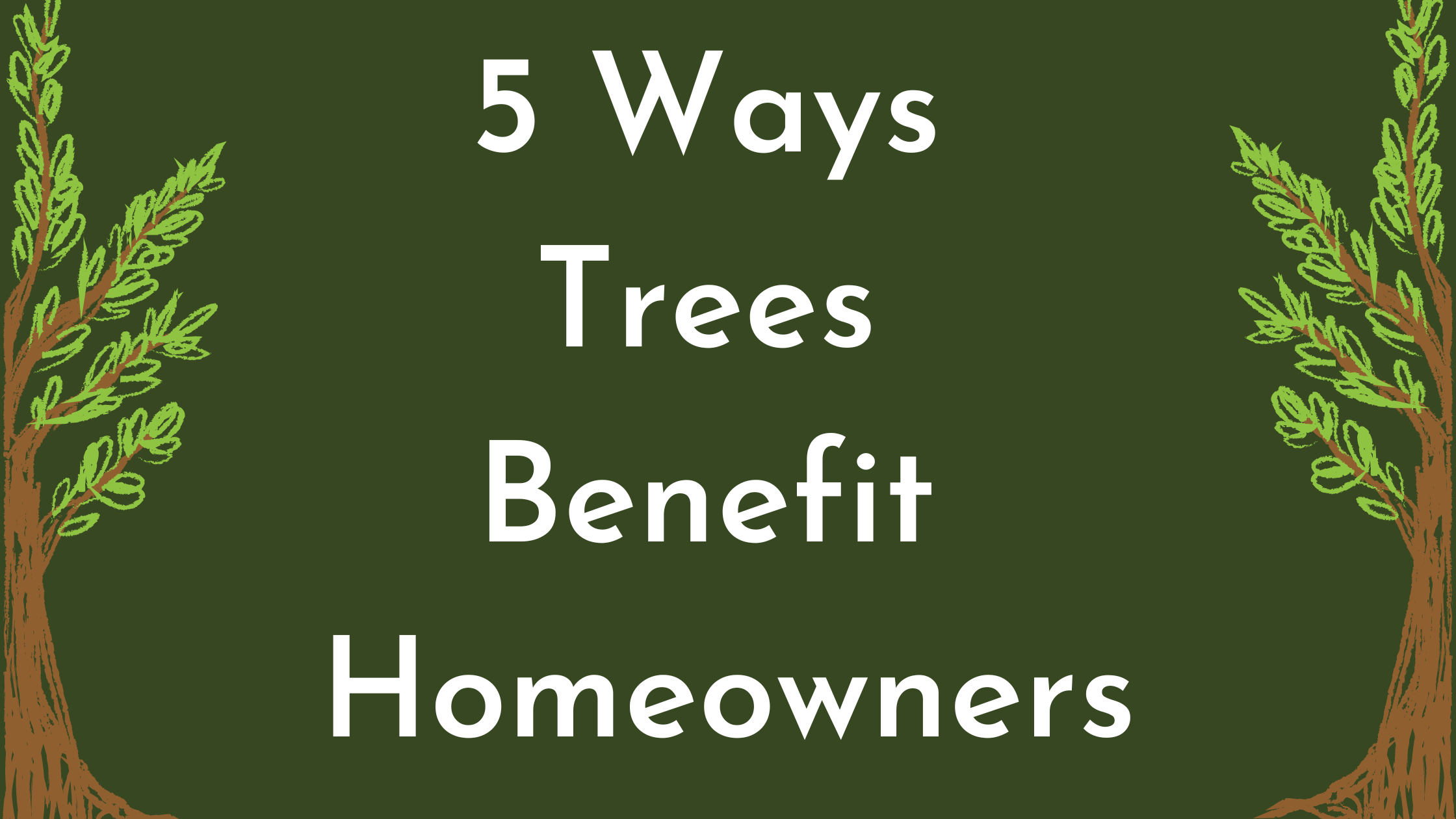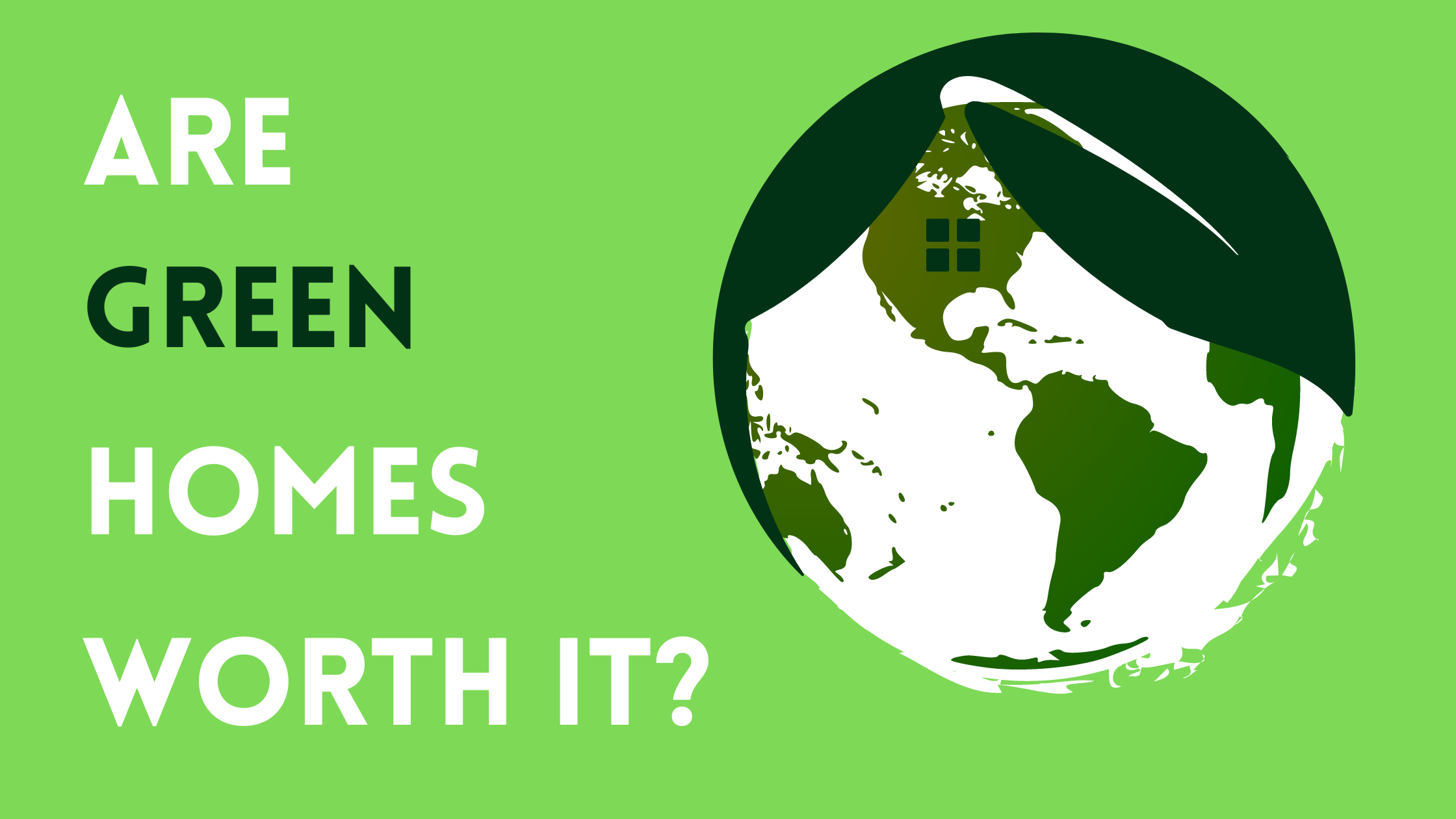 It’s every homeowner’s nightmare, their house crumbling away – but for some, this nightmare is their reality, as sinkholes swallow their homes.
It’s every homeowner’s nightmare, their house crumbling away – but for some, this nightmare is their reality, as sinkholes swallow their homes.  It’s every homeowner’s nightmare, their house crumbling away – but for some, this nightmare is their reality, as sinkholes swallow their homes.
It’s every homeowner’s nightmare, their house crumbling away – but for some, this nightmare is their reality, as sinkholes swallow their homes.
Sinkholes are holes in the ground that form when water dissolves the rock on the surface, resulting in a sinking of the ground. Although they can be naturally occurring, there are also actions taken that can cause them to develop, including:
There have been a few prevalent sinkhole subdivisions in the news in recent years. A few notable include. . .

In Canada, a developer bought a land parcel overlooking Snake Bay with a plan for a 28-lot neighborhood of luxury homes with stellar views. The city’s bylaws required geotechnical reports to be done – which obtain information on the physical properties of soil, to ensure it is viable for the plan.
In 2006, a report was issued by a geotechnical engineer for the site that documented sinkholes present and set forth a plan for safe construction. Due to this report, the city required that the developer register a restrictive covenant against the title on each of the lots, which would alert prospective buyers to the findings. However, buyers of the lots claimed that this important information was never provided to them at any point.
Then, in June 2012, the first major sinkhole occurs, and in 2015, one claims its first home. Eventually, on Christmas Day in 2018, another large sinkhole appears and the city performs a report, which proved that continued use of the site could be deadly. On February 7th, 2019, the city tells residents to evacuate the site or face removal.
The city reports spending $680,000 on ways to remedy the site. One of these reports estimated that a potential repair would cost upwards of $10 million, with no guarantee of success; the city did not move forward with any plan from these investigative efforts.
Three years after being forced to leave, the state of emergency was lifted; however, sinkholes were still a problem, and the value of the once million-dollar homes sat at $2, according to local assessments.
Now, the homes sit empty, slowly deteriorating with items destroyed or thrown around and the walls bearing graffiti; this video uploaded 9 months ago shows the current state of the neighborhood, homes, and sinkhole situation.
/cloudfront-us-east-1.images.arcpublishing.com/gray/N7BQOP45O5P23OVKM7U32IAFIQ.jpg?resize=640%2C360&ssl=1)
In April 2020, a sinkhole appeared in the Hideaway Hills neighborhood – swallowing up an entire front yard. Since then, the sinkhole has continued to grow, claiming other homes. The sinkhole’s existence stems from an underground mine, that has caused instability in the ground of the subdivision; this is because the mine was never closed properly and extends beyond its recorded limits. To fix the problem, the houses and infrastructure would have to be removed and the ground supported via filling or putting in supports – before rebuilding.
The photo below is part of the case, showing where the mining was occurring in comparison where the subdivision was built.

The sinkhole has caused structural problems to occur in the evacuated homes, like:
This has decimated property values and made homes unlivable, causing residents to have multiple home payments or face the difficult decision to face foreclosure.
In September 2022, a South Dakota judge granted the homeowners the ability to bring a class action lawsuit against the state. The suit claims that the state acted recklessly when it did not properly close the state-operated mine. The case is set to take time – if you’d like to follow along with updates, the case name is Andrew Morse and John and Emily Clarke et al. v. State of South Dakota et al.

In July 2017, a sinkhole formed and destroyed two homes; in the following days, five more became unsafe. Florida is a hot spot for sinkholes, due to the limestone in its soil composition – which is soluble. It’s such an issue that there is even an area coined “Sinkhole Alley” in central Florida.
Even during the cleanup, which ended up costing around 1.1 million dollars, the sinkhole continued to expand in diameter, by 25 feet.
The two main homes had sinkholes previously in 2012. These sinkholes were “remedied” through a process called grouting – where a dozen pipes or more are driven down into the soil with depths reaching 60 feet and then filled with concrete. Evidently, this remediation was not successful and led to an eventual failure that proved catastrophic.
It is unclear what happened next to remediate the situation this second time – there were talks of connecting it to a nearby lake, creating a turnaround for delivery trucks, and a few other options. As of now, the site appears fenced and vacant (from Google Maps).
No, sinkholes can be a problem anywhere – from roadways, to single homes, to fields. The sinkholes in subdivisions threaten more homeowners, which is why you may hear about them. Some recent sinkholes that have occurred outside of subdivisions include. . .
There are countless other sinkhole stories on the Internet and plenty more that never actually hit the news, due to their level of notability.
Well, luckily, sinkholes are unlikely to occur in Wisconsin based on the makeup and distribution of the bedrock; however, that’s not to say it can’t or won’t ever happen (as seen in the Hank Aaron State Trail).
Sinkholes can occur in any area that has krast, which is a landscape that occurs when water dissolves rocks. In Wisconsin, krast is most likely to be found in a “V-shaped swath from St. Croix County, along the Mississippi River across the bottom two tiers of counties, and northeast along Lake Michigan up to Marinette County.” So, if you’re looking to avoid sinkholes, you’ll want to avoid buying in a place with krast.
Although, even if you avoid krast, it doesn’t mean you will avoid sinkholes. Sinkholes can also be man-made, which make this variety more random and close to impossible to plan for.
If you feel like you’ve been hearing about more sinkholes lately, it’s probably because you are. They’re becoming more common and happening more often across the World – mostly due to human causes.
Human activities do have an impact on sinkholes – as it mostly relates to water, digging, or disturbance of an area. Human activities that lead to sinkhole development include. . .
As disruptive human activities have increased, there has been an increase in the occurrence of sinkholes.
Sinkholes are a nightmare resulting in high costs, crushed dreams, and lengthy lawsuits to try and find a responsible party. When purchasing homes, especially in areas with high frequencies of sinkholes, buyers must be aware of the potential for them to occur with no warning. In some areas, sinkhole insurance may be available to add to a home insurance policy.
Unfortunately, there are some things that are a part of home ownership and the potential for sinkholes is one of these things that owners need to be aware is a tragic possibility.

Trees are an integral part of the environment, providing habitat, cover, cooling effect, and oxygen. However, did you also know that trees benefit homeowners who plant them in their yards? The following 5 points are reasons why homeowners should consider planting another tree, or two, in their yards.
Landscaping is a large part of curb appeal, and trees can be a large part of landscaping. They’ve been found to have an impact on property value, with mature trees adding to a property’s value (the percentage can vary from 2 to 15% depending on other factors). The study found that the most significant increase will likely be seen in high-income areas compared to less affluent regions. These mature trees give a real character to the property and can help it to stand out amongst the competition on the market.
If choosing the proper trees, trees can offer a green screen or natural privacy barrier from neighbors – allowing for visual blocking and a sound barrier.
In Lake County, and beyond, runoff and soil erosion can be a real issue with all the water bodies. Although many think these issues are relevant only to developments or agricultural land, this is a misconception.
Storm water management is an essential aspect of urbanization and residential neighborhoods. When rain falls on impervious surfaces, it does not allow the water to be taken into the ground; it then runs into the areas’ streams, creeks, wetlands, lakes, and rivers. This runoff can carry pollutants like nitrogen, phosphorous, metals, and bacteria, to name a few. Although cities typically have storm water management in place to deal with most of these issues, it is vital to be a responsible citizen and attempt to do one’s part in reducing this impact. Trees help to decrease the amount of storm water runoff and pollutants that reach the local waters in a few ways:
Did you know that trees can help you save money on energy? In fact, properly positioned trees can “reduce a household’s energy consumption for heating and cooling by up to 25%.” Planting trees can quickly become an energy saver with respect to three areas: shading, windbreaks, and dead space. Deciduous trees, or ones that lose their leaves, are ideal for energy conservation as they provide shade during the summer months and minimal cover during the winter; meanwhile, evergreen trees are best for providing a windbreak. But, of course, there are more planting rules than just the type of tree when it comes to getting the most bang for your buck.
When choosing trees for energy savings, things to keep in mind are insect/disease resistance (especially if planting multiple trees of the same species in one small area), wind tolerance, height and width maturity, and timeline of growing (faster-growing trees are typically weaker than slower growing ones).
A healthy lawn needs good soil to thrive, and organic matter and water are a significant part of good soil. Trees provide these two aspects by bringing in rainwater, roots breaking up the ground, and leaf litter providing organic matter. So, by planting trees, soil health will be improved, thereby, improving the overall look of your lawn.
Picking out the right tree depends on what you’re looking for, as different trees can provide different benefits, so if you’re looking for a privacy barrier, then you’ll want . . .
However, if shade and cover is what you’re after, you would do better to choose something like. . .
Some individuals just want a colorful backyard, with flowers or fall leaves, which makes the following ideal choices. . .
Meanwhile, for those who want to attract wildlife to their yard, they’ll want to go for a . . .
No matter the reason for planting trees, it’s an important aspect of homeownership to consider. With early spring here, it’s a great time to consider adding a new tree, or two, to the yard.

In today’s society, things are evolving to become more sustainable to reduce carbon footprints and the effects of climate change. This includes the construction and remodeling of homes.
Some of the new elements included when building “greener” homes are:
The popularity of these initiatives has boomed as people begin to “greenify” their lives due to news on climate change; in addition, environmentally friendly homes cut down on total energy costs. Although there are new construction practices to create more eco-friendly homes, there are also plenty of renovations or improvements that can be done to an existing home to improve their impact on the environment.
However, the big question is: are “green” homes worth it? To determine an answer to this question, there are a few other questions to consider. . .
Yes, environmentally friendly building practices do make a difference. In fact, new construction is a significant contributor to greenhouse gases, “accounting for almost 40% of emissions globally,” in a 2021 report done by the UN Environment Program. This, alongside using natural resources, could make traditional new construction an environmental threat.
Certified green projects are environmentally friendly, using fewer resources and recycling protocols. They can also work to create a cleaner building space with the material used being less taxing on the environment. These changes make the home more environmentally friendly and reduce carbon emissions. They can also make the home less expensive to operate due to its energy efficiency, reducing total energy use, which is also eco-friendly.
Buyers searching for homes do consider environmental impact when searching for a new home; to what extent it boosts resale value is debatable.
A 2019 study found that homes rated energy efficient sold for 2.7% more than unrated homes. But, of course, one must consider that homes rated energy efficient are likely newer, and newer real estate typically demands higher prices.
In terms of buyer desires, a survey sent to 1,000 agents in 2022 found that 48% said their buyers prioritize energy efficiency in their home search. They also estimated that the value it adds to a home has increased from $6,556 to $8,246. However, buyers are likely only willing to pay more for these environmentally friendly upgrades when they understand the benefits of it, specifically in regards to cost-savings, and even then, it is not guaranteed.
Some environmentally-friendly features are considered more desirable amongst buyers, which may boost the potential for consideration of higher sales prices. The following percentages from the National Association of Home Builders show that:
Therefore, these may be the best to consider when pursuing eco-friendly improvements.
Overall, may it increase resale value? Yes, it very well may, but it also may have no impact. Therefore, if resale value is your only motivating factor for making changes on an environmental level, then it may be best to reconsider. Alternatively, if you are doing it for many reasons like personal choice, energy cost-savings, AND the potential to raise property value, then it is likely a good path for you.
Yes, absolutely! Even if your home may not be built with or have these new environmental advances, it is still possible to create a more eco-friendly home. This doesn’t mean you have to get solar panels, there are plenty of lower costs options available. Some ways to do so include:
And so many more! Check out this resource for additional ways to make your existing home greener.
Additionally, if you ever decide to renovate or demolish an older home to build new, consider doing so in an eco-friendly way. Deconstruction, rather than demolition, is a green alternative, sending 85% less materials to landfills. The deconstruction industry is still an up-and-coming one, but a quick Internet search should provide you with some local options in your area.
Did you know that the state of Wisconsin is going to be offsetting the cost of making your home greener? The estimated launch for the program is sometime in 2023; however, the current plan is as follows. . .
The HOME Rebates program will provide up to $4,000 per household and up to $400,000 to multi-family buildings for energy-efficient retrofits. The rebates will be provided on a sliding scale, dependent on the impact of energy use:
There is also the home electrification program which will offer the opportunity to improve your home with all costs covered if your income is 80% of the median or below in your area. The cap would be $14,000 per household, with the following breakdown:
The most rebated item is heat pumps, although other things like electric stoves, clothes dryers, and insulation are also eligible.
Are you interested in either of these programs? The best first step is to connect with an energy assessor company that can determine ways to make the home energy efficient and let you know if you qualify for certain rebates. Also, be sure to follow the news to be up-to-date with everything concerning this new and upcoming program.
Eco-friendly is the future of many industries, and real estate is no exception. “Green” advancements are being made in the building industry and will continue to be made, according to the experts, as it becomes more mainstream.
As to the question, are “green” homes worth it? The answer depends on the viewpoint from which it is being asked. If it is a personal question, and resale is the only consideration of the person, making their home more eco-friendly, may not be worth it for them; if there are other considerations, like environmental impact, it may well be worth it.
However, on a general scale, making homes more green is worth it in the long run, as people seek to reduce carbon footprints and ensure that the World is a cleaner place for the current generations, and future.